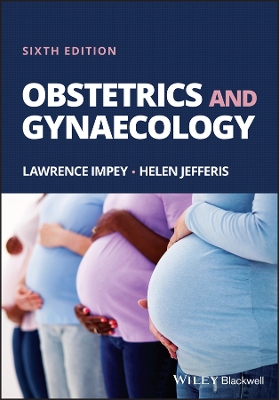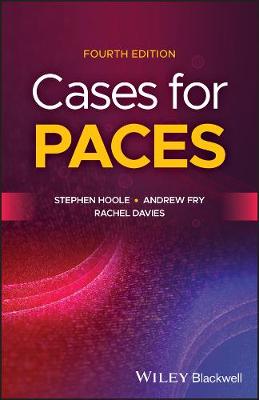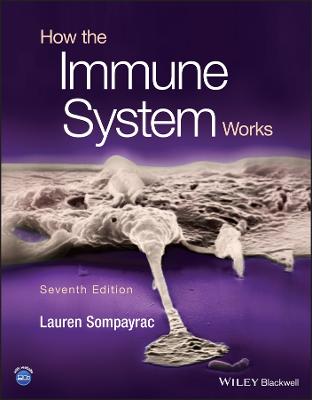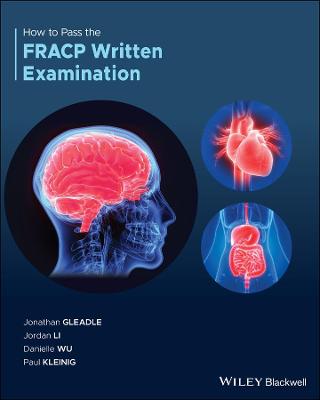Pain Medicine at a Glance
 -15%
portes grátis
-15%
portes grátis
Pain Medicine at a Glance
Hogans, Beth B.
John Wiley and Sons Ltd
12/2021
160
Mole
Inglês
9781118837665
15 a 20 dias
464
Descrição não disponível.
PAIN MEDICINE At-A-Glance Table of Contents
Dr. Beth Brianna Hogans, M.D., Ph.D
I Pain Basics
1 What is pain, how do we assess it?
2 Nociceptive processing, how does pain occur?
3 What are the major types of pain?
4 How prevalent is pain, what are the common forms?
5 How do we resolve dilemmas in pain?
6 What are the big challenges in pain?
7 Cognitive factors that influence pain
II Pain Clinical skills 8 Managing pain safely: diagnosis and treatment
9 Gathering the history with a pain narrative
10 Assessing pain in those with communication barriers
11 Examination skills I: Observation and affect
12 Examination skills II: Inspection and manual skills
13 Knowledge, skills, and compassionate practices
14 Counseling and shared decision-making: applying psychological approaches in primary care for pain
15 Communicating with teams of patients with pain
16 Planning therapy: coordinated, comprehensive care
III Pain Pharmacology 17 Basic considerations for pharmacological therapy - balancing mechanisms of drugs and disease
18 Non-steroidal anti-inflammatory drugs (NSAIDs) and acetaminophen (over-the-counter analgesia)
19 Neuromodulating agents: pain-active anti-depressants and anti-convulsants
20 Opioids - the basics and perioperative pain control
21 Opioids - the details: equianalgesia and safe use
22 Opioids - advanced practice - alternative delivery: IV, PCA, epidural
23 Focal treatments for pain in primary practice: topical, iontophoretic, basic injections, TENS
24 Interventional treatments and surgery for pain
IV Non-pharm. treatments 25 Activating treatment: Physical/occupational therapy, hydrotherapy, exercise: walking, yoga, chi gong
26 Cognitive therapies: CBT, ACT, reframing
27 Manual therapies: massage: trigger points, acupressure, chiropractic, stretching, inversion
28 Therapies that utilize descending pain pathways: video, music, distraction, acupuncture, meditation
V Major pain forms 29 Acute and Chronic pain: the basics
30 Surgical and procedural pain
31 Musculoskeletal pain
32 Orofacial pain
33 Neck Pain, cervical and thoracic spine pain
34 Arm Pain
35 Low back pain
36 Back pain emergencies
37 Radiating leg, buttock, and groin pain
38 Knee pain
39 Foot and ankle pain
40 Headache emergencies
41 Headache - basic diagnosis and management
42 Headache - chronic pain and the acute flare
43 Visceral pain
44 Pelvic pain
45 Exceptional causes of severe, chronic pain: CRPS, fibromyalgia, erythromelalgia
VI Special patient groups and clinical contexts 46 Management of pain with substance abuse
47 Pain at the end of life, opioid rotation
48 Opioids for chronic pain: preventing iatrogenic OUD
49 Tapering opioids in patients with pain
50 Pain in infants, children, and adolescents
51 Pain in older patients
52 Pharmacotherapy in aging, renal & liver dysfunction
53 Pain in pregnancy and the peripeurium
Appendices
I Sample exam sheet
II Sample pain diary
III Daily stretching guide
IV Patient packet - Your power over pain
V Glossary
Dr. Beth Brianna Hogans, M.D., Ph.D
I Pain Basics
1 What is pain, how do we assess it?
2 Nociceptive processing, how does pain occur?
3 What are the major types of pain?
4 How prevalent is pain, what are the common forms?
5 How do we resolve dilemmas in pain?
6 What are the big challenges in pain?
7 Cognitive factors that influence pain
II Pain Clinical skills 8 Managing pain safely: diagnosis and treatment
9 Gathering the history with a pain narrative
10 Assessing pain in those with communication barriers
11 Examination skills I: Observation and affect
12 Examination skills II: Inspection and manual skills
13 Knowledge, skills, and compassionate practices
14 Counseling and shared decision-making: applying psychological approaches in primary care for pain
15 Communicating with teams of patients with pain
16 Planning therapy: coordinated, comprehensive care
III Pain Pharmacology 17 Basic considerations for pharmacological therapy - balancing mechanisms of drugs and disease
18 Non-steroidal anti-inflammatory drugs (NSAIDs) and acetaminophen (over-the-counter analgesia)
19 Neuromodulating agents: pain-active anti-depressants and anti-convulsants
20 Opioids - the basics and perioperative pain control
21 Opioids - the details: equianalgesia and safe use
22 Opioids - advanced practice - alternative delivery: IV, PCA, epidural
23 Focal treatments for pain in primary practice: topical, iontophoretic, basic injections, TENS
24 Interventional treatments and surgery for pain
IV Non-pharm. treatments 25 Activating treatment: Physical/occupational therapy, hydrotherapy, exercise: walking, yoga, chi gong
26 Cognitive therapies: CBT, ACT, reframing
27 Manual therapies: massage: trigger points, acupressure, chiropractic, stretching, inversion
28 Therapies that utilize descending pain pathways: video, music, distraction, acupuncture, meditation
V Major pain forms 29 Acute and Chronic pain: the basics
30 Surgical and procedural pain
31 Musculoskeletal pain
32 Orofacial pain
33 Neck Pain, cervical and thoracic spine pain
34 Arm Pain
35 Low back pain
36 Back pain emergencies
37 Radiating leg, buttock, and groin pain
38 Knee pain
39 Foot and ankle pain
40 Headache emergencies
41 Headache - basic diagnosis and management
42 Headache - chronic pain and the acute flare
43 Visceral pain
44 Pelvic pain
45 Exceptional causes of severe, chronic pain: CRPS, fibromyalgia, erythromelalgia
VI Special patient groups and clinical contexts 46 Management of pain with substance abuse
47 Pain at the end of life, opioid rotation
48 Opioids for chronic pain: preventing iatrogenic OUD
49 Tapering opioids in patients with pain
50 Pain in infants, children, and adolescents
51 Pain in older patients
52 Pharmacotherapy in aging, renal & liver dysfunction
53 Pain in pregnancy and the peripeurium
Appendices
I Sample exam sheet
II Sample pain diary
III Daily stretching guide
IV Patient packet - Your power over pain
V Glossary
Este título pertence ao(s) assunto(s) indicados(s). Para ver outros títulos clique no assunto desejado.
pain treatment; pain pathophysiology; pain clinical guide; pain reference; pain science; pain clinical skills; pain pharmacology; pain prescribing; pain forms; pain types; pain therapies; pain textbook; pain medical students; pain healthcare students; interprofessional competencies for pain
PAIN MEDICINE At-A-Glance Table of Contents
Dr. Beth Brianna Hogans, M.D., Ph.D
I Pain Basics
1 What is pain, how do we assess it?
2 Nociceptive processing, how does pain occur?
3 What are the major types of pain?
4 How prevalent is pain, what are the common forms?
5 How do we resolve dilemmas in pain?
6 What are the big challenges in pain?
7 Cognitive factors that influence pain
II Pain Clinical skills 8 Managing pain safely: diagnosis and treatment
9 Gathering the history with a pain narrative
10 Assessing pain in those with communication barriers
11 Examination skills I: Observation and affect
12 Examination skills II: Inspection and manual skills
13 Knowledge, skills, and compassionate practices
14 Counseling and shared decision-making: applying psychological approaches in primary care for pain
15 Communicating with teams of patients with pain
16 Planning therapy: coordinated, comprehensive care
III Pain Pharmacology 17 Basic considerations for pharmacological therapy - balancing mechanisms of drugs and disease
18 Non-steroidal anti-inflammatory drugs (NSAIDs) and acetaminophen (over-the-counter analgesia)
19 Neuromodulating agents: pain-active anti-depressants and anti-convulsants
20 Opioids - the basics and perioperative pain control
21 Opioids - the details: equianalgesia and safe use
22 Opioids - advanced practice - alternative delivery: IV, PCA, epidural
23 Focal treatments for pain in primary practice: topical, iontophoretic, basic injections, TENS
24 Interventional treatments and surgery for pain
IV Non-pharm. treatments 25 Activating treatment: Physical/occupational therapy, hydrotherapy, exercise: walking, yoga, chi gong
26 Cognitive therapies: CBT, ACT, reframing
27 Manual therapies: massage: trigger points, acupressure, chiropractic, stretching, inversion
28 Therapies that utilize descending pain pathways: video, music, distraction, acupuncture, meditation
V Major pain forms 29 Acute and Chronic pain: the basics
30 Surgical and procedural pain
31 Musculoskeletal pain
32 Orofacial pain
33 Neck Pain, cervical and thoracic spine pain
34 Arm Pain
35 Low back pain
36 Back pain emergencies
37 Radiating leg, buttock, and groin pain
38 Knee pain
39 Foot and ankle pain
40 Headache emergencies
41 Headache - basic diagnosis and management
42 Headache - chronic pain and the acute flare
43 Visceral pain
44 Pelvic pain
45 Exceptional causes of severe, chronic pain: CRPS, fibromyalgia, erythromelalgia
VI Special patient groups and clinical contexts 46 Management of pain with substance abuse
47 Pain at the end of life, opioid rotation
48 Opioids for chronic pain: preventing iatrogenic OUD
49 Tapering opioids in patients with pain
50 Pain in infants, children, and adolescents
51 Pain in older patients
52 Pharmacotherapy in aging, renal & liver dysfunction
53 Pain in pregnancy and the peripeurium
Appendices
I Sample exam sheet
II Sample pain diary
III Daily stretching guide
IV Patient packet - Your power over pain
V Glossary
Dr. Beth Brianna Hogans, M.D., Ph.D
I Pain Basics
1 What is pain, how do we assess it?
2 Nociceptive processing, how does pain occur?
3 What are the major types of pain?
4 How prevalent is pain, what are the common forms?
5 How do we resolve dilemmas in pain?
6 What are the big challenges in pain?
7 Cognitive factors that influence pain
II Pain Clinical skills 8 Managing pain safely: diagnosis and treatment
9 Gathering the history with a pain narrative
10 Assessing pain in those with communication barriers
11 Examination skills I: Observation and affect
12 Examination skills II: Inspection and manual skills
13 Knowledge, skills, and compassionate practices
14 Counseling and shared decision-making: applying psychological approaches in primary care for pain
15 Communicating with teams of patients with pain
16 Planning therapy: coordinated, comprehensive care
III Pain Pharmacology 17 Basic considerations for pharmacological therapy - balancing mechanisms of drugs and disease
18 Non-steroidal anti-inflammatory drugs (NSAIDs) and acetaminophen (over-the-counter analgesia)
19 Neuromodulating agents: pain-active anti-depressants and anti-convulsants
20 Opioids - the basics and perioperative pain control
21 Opioids - the details: equianalgesia and safe use
22 Opioids - advanced practice - alternative delivery: IV, PCA, epidural
23 Focal treatments for pain in primary practice: topical, iontophoretic, basic injections, TENS
24 Interventional treatments and surgery for pain
IV Non-pharm. treatments 25 Activating treatment: Physical/occupational therapy, hydrotherapy, exercise: walking, yoga, chi gong
26 Cognitive therapies: CBT, ACT, reframing
27 Manual therapies: massage: trigger points, acupressure, chiropractic, stretching, inversion
28 Therapies that utilize descending pain pathways: video, music, distraction, acupuncture, meditation
V Major pain forms 29 Acute and Chronic pain: the basics
30 Surgical and procedural pain
31 Musculoskeletal pain
32 Orofacial pain
33 Neck Pain, cervical and thoracic spine pain
34 Arm Pain
35 Low back pain
36 Back pain emergencies
37 Radiating leg, buttock, and groin pain
38 Knee pain
39 Foot and ankle pain
40 Headache emergencies
41 Headache - basic diagnosis and management
42 Headache - chronic pain and the acute flare
43 Visceral pain
44 Pelvic pain
45 Exceptional causes of severe, chronic pain: CRPS, fibromyalgia, erythromelalgia
VI Special patient groups and clinical contexts 46 Management of pain with substance abuse
47 Pain at the end of life, opioid rotation
48 Opioids for chronic pain: preventing iatrogenic OUD
49 Tapering opioids in patients with pain
50 Pain in infants, children, and adolescents
51 Pain in older patients
52 Pharmacotherapy in aging, renal & liver dysfunction
53 Pain in pregnancy and the peripeurium
Appendices
I Sample exam sheet
II Sample pain diary
III Daily stretching guide
IV Patient packet - Your power over pain
V Glossary
Este título pertence ao(s) assunto(s) indicados(s). Para ver outros títulos clique no assunto desejado.







